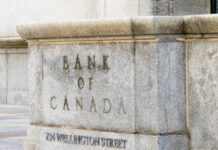Markets
European interest rate markets took somewhat of a hesitant/cautious start after yesterday’s sharp intraday swings. With financial stability issues moving to the background, inflation took center stage today. French inflation enjoyed the positive impact from a big March 2022 base effect, easing from 7.3% to 6.6% Y/Y (HCPI). However, the monthly rise stayed elevated (0.9% M/M), putting a floor for any correction on recent yield-rebound. German retail sales and labour market data were softer than expected but were ignored. EMU inflation followed the expected script. Headline Y/Y inflation for similar technical reasons dropped from 8.5% to 7.1% Y/Y, but European consumers also still saw prices of their basket of goods and services rising by a bumpy 0.9% M/M. Core inflation even set a new record of 5.7% Y/Y. Markets again hesitated. The inflationary narrative remained straight forward, but data didn’t bring the big surprise needed to force a swift break beyond important technical barriers as German yields were fighting obvious resistance levels (2-y 2.77% area, 10-y 2.4% area). US and German yields traded little changed to marginally higher going in to the release of the US PCE deflators. Both the headline and the core measure eased marginally more than expected at 0.3% M/M and 5% Y/Y and 0.3% M/M and 4.6% Y/Y respectively. Spending slowed to 0.2% M/M but coming on the back of an exceptionally strong January growth (2%) The report doesn’t change the inflation picture in a profound way, especially as it is a bit outdated. Even so, for yields it was enough to call off any further attempts to extend this week’s rebound. US yields are declining 1.5 bps for the 2-y to 3/3.5 bps for longer maturities. German yields decline 3 bps (2-y) to 4.5 bps (10-y). Even so, in a weekly perspective German yields still keep a weekly gain of 35 bps (2-y) to about 20 bps for the 10-y yield. Money markets now again fully discount the ECB depo rate be raised to at least to 3.5%. The US 2-y yield this week gains 33 bps. The 10-y adds 15 bps. US money markets still only see about 50% chance for an additional Fed rate hike in May or June. However, money markets scaled back about 50 bps rate cuts for the end of this year. The ebbing of financial uncertainty, even as it leads to higher yields, continues to support equity gains. The EuroStoxx 50 (+ 0.55%) is only a whisker away from the March top. US indices open about 0.5% higher. Brent oil rises near the $80/b level amongst other on better Chinese growthand supply disruptions in Iraq/Kurdish territory.
On FX markets, the euro after a nice rebound, was captured by some end-of-week (quarter?) fatigue. Yesterday and this morning, the EUR/USD 1.0930 correction top was within reach, but the resistance did its job, sending the pair back below the 1.09 big figure (currently 1.0885). To be continued next week. DXY trades marginally stronger at 102.32, but the technical picture remains fragile, with 101.91 support still nearby. The yen further reverses gains from mid this month (USD/JPY 133.15). Sterling gains a few ticks against the euro but EUR/GBP trading still holds and extremely tight range near 0.88.
News Headlines
The Bank of Japan expanded the range of its planned bond purchases for the next quarter. It will buy bonds in a range between JPY 100bn and 500bn compared to 200-400bn previously. As such it allows itself to scoop up less govies, which has become less (and even un)necessary since the recent financial market turbulence kicked bond yields, including Japan’s, lower. Its 10y yield hit a seven month low of 0.177% mid-March. Recovering since then to 0.35% today, it is still well below the 0.50% upper bound. Before the turmoil the BoJ was buying record amounts to prevent the yield from pushing higher.
Polish inflation eased from 18.4% to 16.2% in March on a 1.1% monthly increase. Fuel, gas and electricity prices all fell m/m with fuel even flat in yearly terms. Food prices on the other hand still rose a significant 2.3% m/m. The decline was slightly less than hoped-for (16%) but it is most likely the start of an ongoing deceleration in the months ahead. KBC Economics estimates that core inflation, officially released on April 17, ticked higher to around 12.2%, suggesting the inflation battle by the National Bank of Poland is far from over. It is no secret that governor Glapinski and a dovish MPC majority is increasingly leaning towards rate cuts. But given high (and rising core) inflation, that is premature. Polish swap yields raced higher in the wake of the release, adding 3.2 to 8 bps, deepening the curve inversion. The Polish zloty appreciated marginally to EUR/PLN 4.67.











